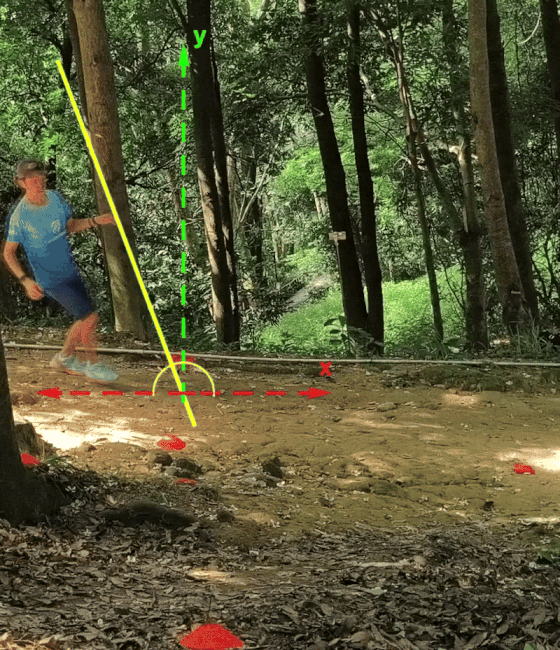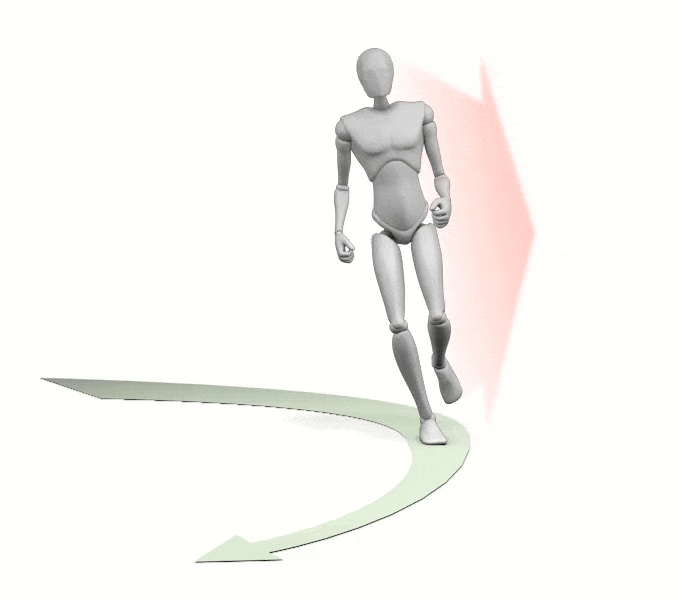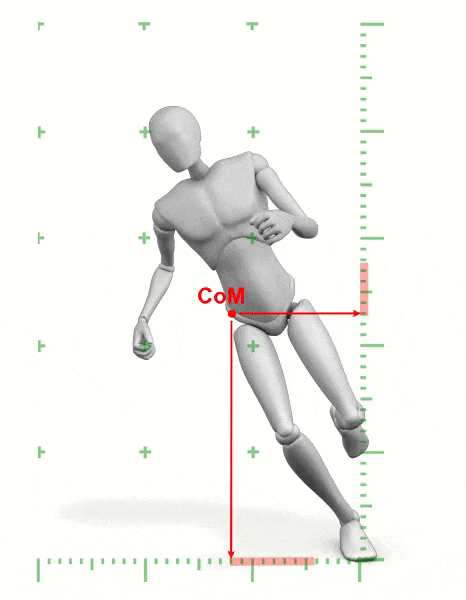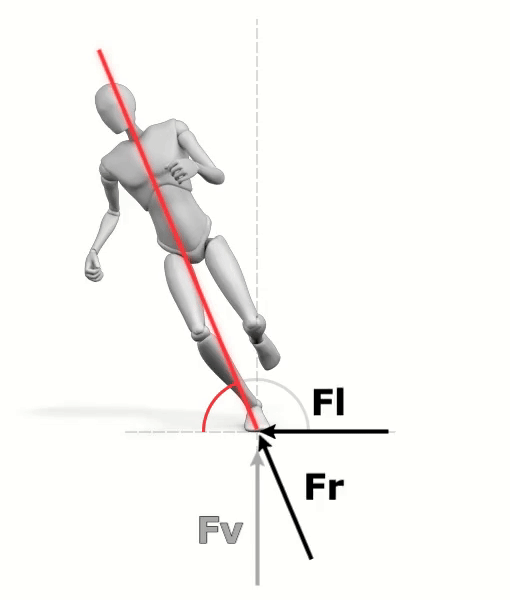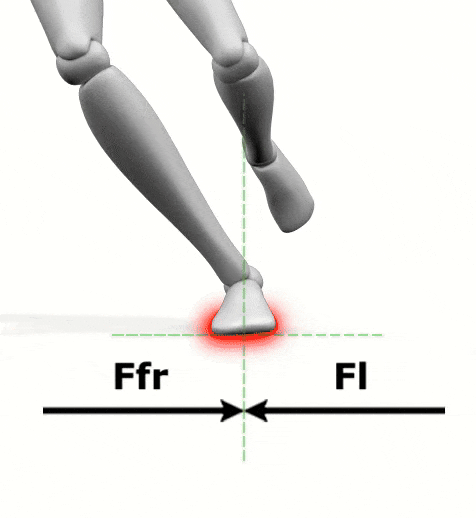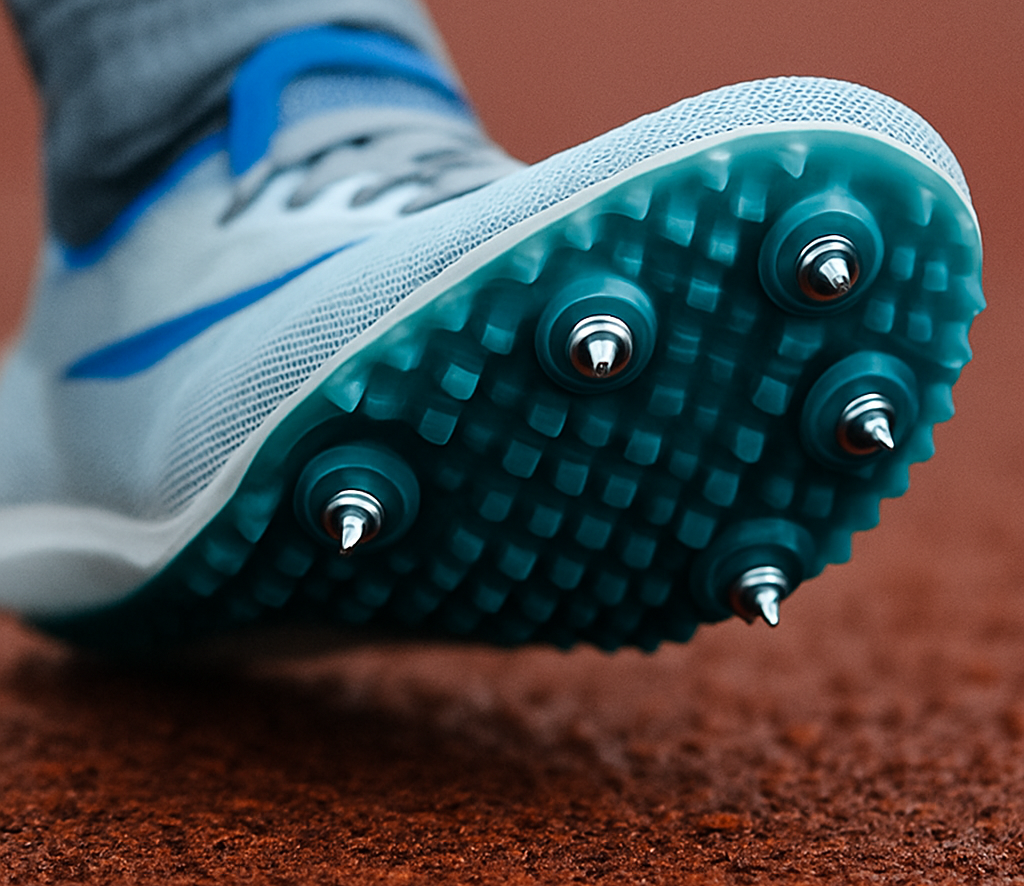PERFORMANCE THROUGH THE CURVE ADVANTAGE
INTRODUCTION
Running along a curve is second nature to trail runners. Whether you’re weaving through winding forest paths or sidestepping sudden obstacles, changing direction smoothly and efficiently is essential on the trails. But curved running isn’t just instinct — it’s a biomechanical dance, shaped by science.
Key forces come into play: your center of mass, centrifugal force, and the way the ground supports you. How these factors work together determines how quickly — and safely — you can navigate curves while staying balanced and in control.
In this article, we’ll break down these principles in a clear, engaging way, helping you understand the biomechanics behind running curves on the trail. With these insights, you’ll be ready to refine your technique, run with more confidence, and elevate your trail running performance on every twist and turn ahead.
CENTRIFUGAL FORCE
When a runner moves forward, their body is affected by inertia, carrying them in the same direction they were originally moving. As soon as the runner starts navigating a curve, however, another force comes into play — centrifugal force. This apparent force tends to pull the runner’s body outward, away from the center of the curve.
The faster you run and the sharper the curve, the stronger this outward pull becomes. As a result, the stronger the centrifugal force, the more your body must tilt inward, closer to the ground, to maintain balance. This inward lean helps counteract the outward momentum (represented by the red arrow in the illustration).
By leaning into the curve, you harmonize these opposing forces, staying stable and in control even on unpredictable trail surfaces.
In sports where athletes reach much higher speeds than runners — such as speed skating on ice or motorcycle racing — the required body tilt becomes much greater, forcing the body to lean closer to the ground than in running. This more extreme lean helps balance even stronger outward forces at those higher speeds.
CENTER OF MASS
When you run through a curve, your body doesn’t just lean — it orchestrates a coordinated adjustment of your entire posture to stay balanced. As you lean inward, your center of mass lowers and shifts farther away from your planted foot on the ground. This adjustment helps you counteract the outward pull caused by centrifugal force, maintaining grip and stability on the trail.
The animation above shows how the center of mass, marked as CoM, moves downward and outward from the supporting foot as the body leans. The CoM is not fixed in relation to the body — its position is influenced by every part of you. The movement and placement of your arms, the angle of your torso and chest, and the position of your head all contribute to fine-tuning where your CoM goes, helping you stay stable and find the safest, most efficient line through the turn. All these subtle movements work together like a symphony.
INTERACTION OF FORCES DURING LEANING IN A CURVE
The following animation helps explain how different forces interact with your body when you lean through a curve while running:
✅ Fv (Vertical force): This is the ground pushing upward against your body weight, keeping you supported against gravity. It remains constant whether you’re running straight or turning and always acts through the foot you place on the ground.
✅ Fl (Lateral force): This force comes into play only when you lean your body to take a curve. When you run straight, your body stays vertical, so there’s no lateral force acting. But as soon as you lean, a lateral force develops at the planted foot, working in the opposite direction of the centrifugal effect. It pushes inward, helping prevent you from sliding outward. The more you lean, the stronger this lateral force becomes.
✅ Fr (Resultant force): This is the combination of the vertical and lateral forces. Its direction aligns with your tilted body, supporting your overall balance. The sharper your lean, the steeper the angle of this resultant force, and the stronger the lateral force must be to keep you steady. At this point, friction force comes into play as well, allowing your foot to grip the trail surface, even on challenging, unpredictable terrain.
FOOT PLACEMENT AND FRICTION FORCE IN CURVE RUNNING
As a runner leans into a curve, a lateral force (Fl) appears, pushing inward from the planted foot to balance the outward pull of centrifugal force. But for this lateral force to truly keep you stable, one more crucial factor must join the equation: friction.
The animation above shows how your foot’s grip interacts with these forces on the ground. As the lateral force grows with a stronger lean, the friction force (Ffr) must also increase to counter it. These two forces act in opposite directions: the lateral force tries to slide your foot outward, while friction resists that movement, anchoring you firmly to the trail.
The tighter and faster the curve, the stronger the lateral force, and therefore the stronger the friction force needs to be to stop you from slipping. That’s why good trail shoes and solid foot placement are so important on rugged, loose, or muddy paths — they help you harness the stabilizing power of friction, turning these complex forces into confident, secure movement.
On a running track, the ground is usually made of rubber, and sprinters wear spikes to maximize friction for stability and speed. But on a trail, surfaces are uneven, and conditions change constantly, making reliable grip and adaptable foot placement even more critical.
Key takeaway for trail runners: When you lean, remember that friction is your secret ally. Train your footwork, trust your footwear, and let friction help you stay in control through every curve the trail throws your way.
CONCLUSION
Trail running is more than just a physical workout — it’s a partnership between your body, your mind, and the terrain. Understanding the biomechanics behind curve running, balance, and force interaction gives you a powerful advantage.

